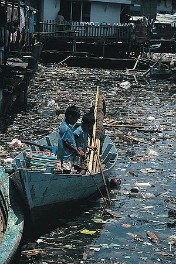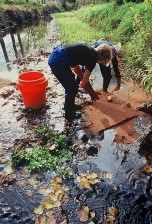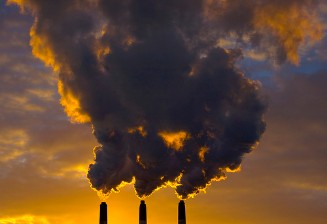COMMON SOUTH ASIAN VOICE
President Mahinda Rajapaksa made an important proposal this year when he called for a South Asian Parliament at the Heads of State Summit of the South Asian Association for Regional Cooperation (SAARC) in Bhutan.
Addressing the 16th Summit of the eight-nation South Asian body in Thimphu, the President proposed a regular Conclave of SAARC parliamentarians. It was an important and timely proposal as such a Conclave will further engage the support and involvement of the people’s representatives in the South Asian region.
Such a move would not only make SAARC popular within the region but also among the international community. As President Rajapaksa has pointed out, the goal of the SAARC movement should be to become a truly people centric body. SAARC should not hesitate to build new structures and mechanisms to enable the regional body to reach its full potential. The SAARC nations, within their own grouping, should be bold enough to introspect and take measures to improve the existing mechanisms, through review, rationalisation and reinvigoration.
As President Rajapaksa has pointed out, there should be a common South Asian voice on issues of climate change, with those who historically contributed to climate change now sharing the burden of mitigating it.
Though Sri Lanka successfully eradicated terrorism under the far-sighted political leadership of President Rajapaksa, terrorism has posed a great threat with increased terror acts in the region. In these circumstances, the continued cooperation among South Asian nations is of utmost importance in the global battle against terrorism.
Sri Lanka could be the role model in the global attempt to crush terrorism. Being the first country to eliminate terrorism, Sri Lanka could provide its expertise and leadership to eradicate terrorism from South Asia too. The defeat of separatism and terrorism has given Sri Lanka an opportunity to engage in open discussions and reach consensus, sans the fear of guns.
There is a massive population in South Asia that has created a huge market. If there is greater understanding among SAARC countries, we will be able to take economic progress beyond statistics to reach the village level.
Most South Asians live and carry out policies that strengthen the rural sector and prevent the unwelcome movement from village to city. Greater emphasis should be made to overcome all such obstacles and strengthen the rural sector in SAARC countries.
Instead of taking what is thrown by the West as the gospel truth, we must confront our problems with South Asia’s own home grown solutions. That is the best way to counter the current and future problems in South Asia.
By displaying the unity and strength of the SAARC region, we must uphold our sovereign right to decide on what is best for us, to suit the best interests of the people living in this part of the world. Though it may seem difficult at times, we must always strive hard to avoid and reject externally induced rigid solutions. Instead of what is forced upon us by certain countries in the West and some international organisations, we must exploit home grown and intra-regionally evolved measures.
Economies in South Asia, led by the dynamic growth of India, have weathered global recession successfully, reducing the adverse impact of world trends in South Asia. Sri Lanka too has successfully faced adverse trends experienced in the world economies. When the economy in the so-called developed countries in the West were trembling as never before and the topmost banks in the world were collapsing, Sri Lanka stood tall.
This was purely due to the right economic policies implemented by the Government under the direction of President Rajapaksa, who is also the Minister of Finance. Despite the adverse economic global environment, Sri Lanka has achieved an average economic growth of about six percent per annum during the past five years. Moreover, Sri Lanka’s per capita income has doubled during the past five years - increasing from USD 1,060 in 2005 to USD 2,050 at present. The booming economies of India and China have given an added advantage to Asia and the countries in the SAARC region too could benefit in various aspects.
The SAARC Movement must find the best and the most appropriate means to implement the provisions of existing SAARC Conventions, especially those against terrorism and economic development.
While rejecting unrealistic solutions foisted on us by the West, we must also bear in mind that the SAARC Movement, as a regional organisation, cannot progress in isolation. Hence, we must strengthen the means for practical engagement with the SAARC Observer States and with selected international organisations, the UN in particular, for our development efforts.
The recent Heads of State Summit of SAARC enabled member countries to have bilateral talks. It provided the ideal platform for Heads of State to discuss problems of mutual interest during bilateral talks held on the sidelines of the Summit. Such talks would undoubtedly help to have a greater understanding among the countries in South Asia.
The launch of the SAARC Development Fund (SDF) is a landmark achievement in the 25-year-old history of the South Asian regional body. The idea for such an important venture was mooted at the previous SAARC Summit in Sri Lanka. Though it’s premature to talk about the progress of the SDF, such a body could make an active contribution to develop the South Asian economy.
The SDF, to function under a Chief Executive Officer at a permanent Secretariat in the Bhutanese capital, could well serve as a regional funding mechanism. Undoubtedly, the launch of the SDF is one of the major achievements in the history of SAARC.
Countries in the SAARC region must speak with one voice on issues of common concern for South Asia at international fora, such as the United Nations. If we could achieve those goals, SAARC could well be one of the most powerful regional bodies in the world.
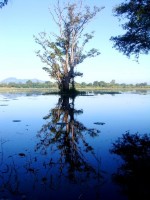
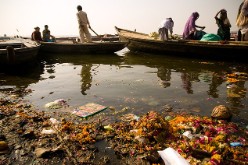
Protect the Environment for Future Generations
World Environment Day (WED) was established by the United Nations General Assembly in 1972. WED is hosted every year by a different city andcommemorated with an international exposition through the week of June 5th.
Below: Tree Planting Campaign to commemorate the World Environment Day on 5th of June 2009 at Ladies' College Colombo by the school Environment Association, London A/L AICT students with Vice Principal Mrs. Eesha Speldewinde.
The World Environment Day is an occasion for people all over the world to come together and demonstrate their commitment to the protection of the environment. We can show our commitment to the environment by protecting it for our future generations.
“The sun, the moon and the stars would have disappeared long ago... had they happened to be within the reach of predatory human hands.”
Havelock Ellis, the Dance of Life, 1923
As explained in the above quote, the sun, moon and the stars too would have been destroyed in the same manner that our environment around us is being destroyed by us.
Today, with the development of technology and industries, the environment around us is getting polluted. Air pollution, water pollution and sound pollution are some of the main ways of how our environment is being destroyed. Since the areas available for building is insufficient, we are compelled to cut trees and clear forests. But we should bear in mind the fact that we are harming Mother Nature. Clearing forests take away the shelter of many animals and birds, and also creates soil erosion causing destruction like landslides and droughts. In the long run, global warming takes place, creating many environmental problems. This harms not only humans, but animals too, who have an equal right as we do to enjoy nature and live in the environment.
The destruction to the environment is increasing day by day. Therefore it is our responsibility to conserve it, and hand it over to our future generations in the same way it was handed over to us by our ancestors. In order to protect our environment, we can reduce clearing forests and polluting; and reduce the wastage, and recycle as much as possible for a better tomorrow.
“We are at a watershed. We have the knowledge and the technology to solve many of the environmental ills facing our planet. What we need now is more political will to bring about change. Now is the time to act..”
The destruction caused to our environment should be reduced. It should be protected and preserved. As today is the most suitable day for this, found in our calendar, start right now!! Help make the world a better place in your own little way! It is important not only for us humans, but all living beings on the whole.
After all, “The environment does not belong to us, we belong to the environment!!”
By Sachini Nanayakkara Trinushka Perera
Ancjana Ravi Sheruni Alles
Nadeesha Gunasekara
the London A/L ICT students of Ladies' College, Colombo 7.
What the world has become today
